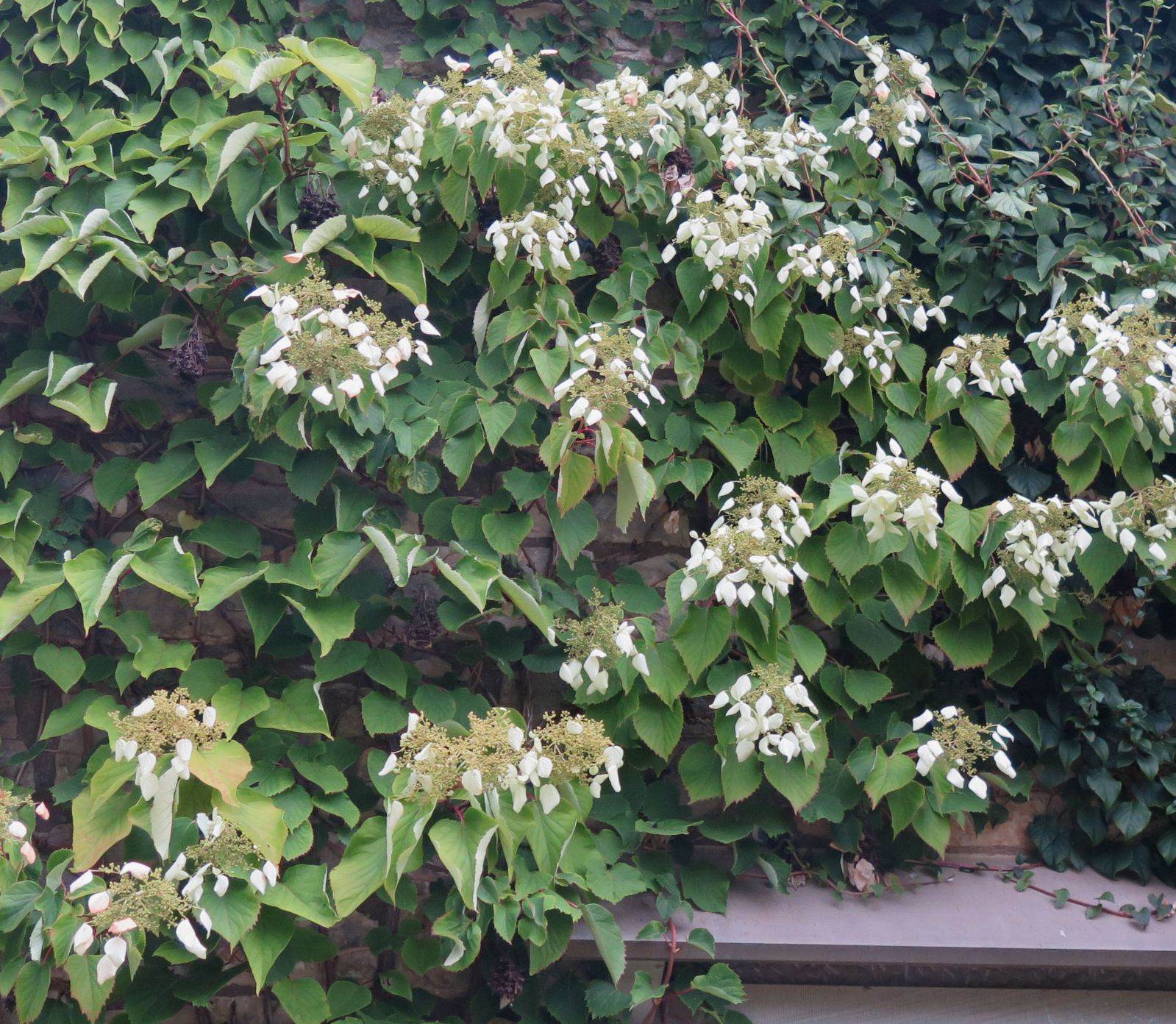Schizophragma hydrangeoides
Credits
Article from Bean's Trees and Shrubs Hardy in the British Isles
Recommended citation
'Schizophragma hydrangeoides' from the website Trees and Shrubs Online (treesandshrubsonline.
Genus
A deciduous, climbing shrub, reaching 40 or more ft high in the wild; young stems glabrous, reddish, and furnished with aerial roots. Leaves broadly ovate, with a rounded, heart-shaped or tapering base; 4 to 6 in. long, 21⁄2 to 4 in. wide, strongly veined, coarsely and angularly toothed, deep green and glabrous above, but paler, rather glaucous, and with silky hairs beneath; stalk 1 to 2 in. long. The leaves near the inflorescence are tapered at the base, those on sterile shoots heart-shaped. Flowers small, yellowish white, slightly scented, produced during July in a broad, flattish, cymose inflorescence 8 or 10 in. across. The chief feature of the inflorescence are the bracts, one of which terminates each main branch of the cyme, and is heart-shaped or ovate, pale yellow, 1 to 11⁄2 in. long; flower-stalks furnished with a thin, loose down. Bot. Mag., t. 8520.
Native of Japan, where, along with Hydrangea petiolaris it forms a conspicuous feature in the forests, often covering the trunks of large trees. In gardens it is rare, the plant introduced by Maries for Messrs Veitch under its name being in fact Hydrangea petiolaris, a species of similar habit but quite distinct in foliage and inflorescence. It was the latter, and not S. hydrangeoides, that received a First Class Certificate in 1885. The date of introduction of the present species is uncertain, but it appears to have first flowered in this country in 1905, in the garden of B.E. Chambers at Grayswood Hill, Haslemere.
The floral bracts of this species vary much in size and shape, but are usually smaller than those of the following species, from which it is also distinct in its coarsely toothed leaves.

